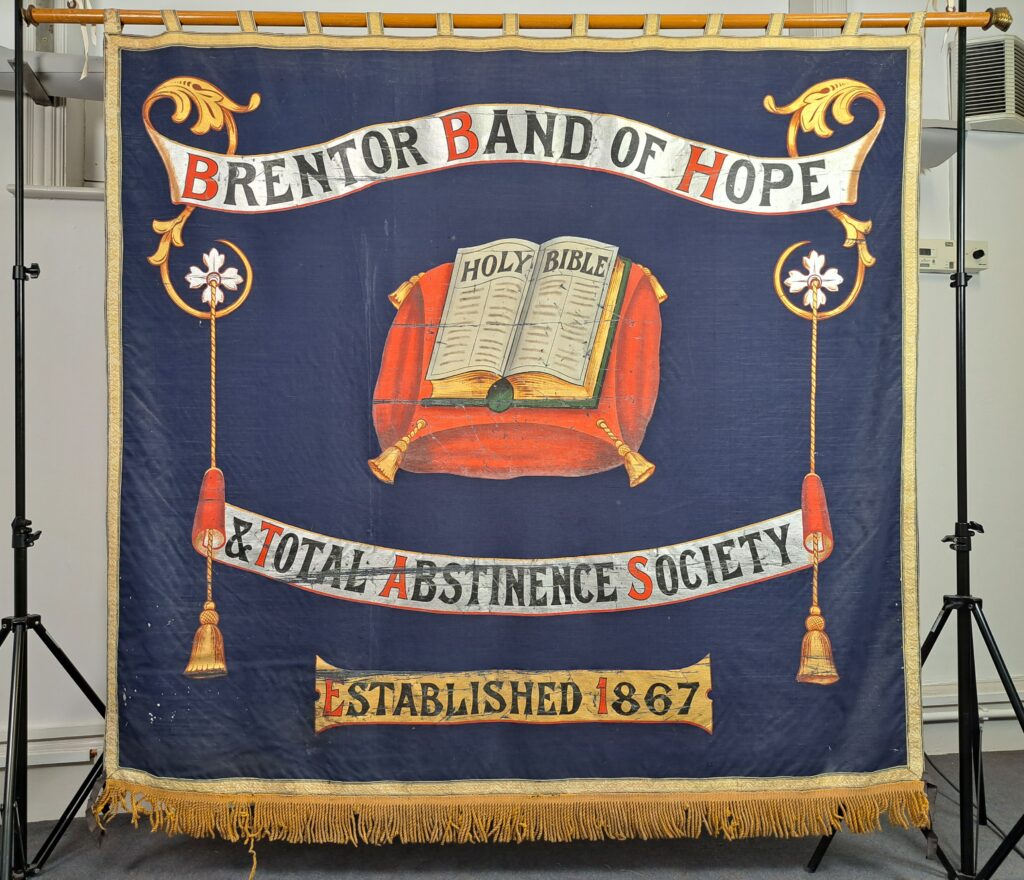Each year Tavistock Museum tries to repair an object in its collection. This summer textile conservators at the Royal Albert Memorial Museum (RAMM) in Exeter are restoring the Brentor village banner.
With its vibrant colours, The Band-of Hope banner is the most impressive of our three religious banners. Sadly, it is the one most in need of restoration to stop deterioration and repair damage.
The Band-of-Hope was a temperance movement which received popular support in the years leading up to the First World War. Village branches became part of the social fabric in the Tavistock mining areas as many Methodist chapels supported the temperance cause. Pre-WW1 they held biennial demonstrations where columns of young people walked behind their village banners. These were some of the longest processions seen in our town.
It was a grand day out for the young people. The events took on a carnival-like atmosphere and ended with musical entertainment. Having such a striking banner to follow would have been a cause of great pride for the young people of Brentor.
The 21.5 m x 1.5 m Brentor Band-of-Hope banner is believed to have been made for the congregation of the Brentor Bible Christian Chapel in about 1900. An important object for our mining world heritage site, it shows the close link between Methodist chapels and their communities. As religious and social centres, the chapels did much to hold mining communities together during times of economic boom-and-bust.
The banner appears in the early pre-WW1 photographic records of our town which feature the demonstrations. Two persons holding vertical poles carried the banner, which hung from a horizontal rail between the poles. It is rare to have a museum object so closely linked to a local village.
After WW1 support for the temperance movement fell away and there was no further use of the banner. For decades, it lay folded at the back of a local chapel until the Tavistock Methodist Circuit donated it to the museum in 2019.
This year a textile conservator at RAMM carried out a condition assessment. They identified a number of issues including – minor structural damage, surface damage, disfigurement, chemical deterioration, biological deterioration and accretions. Much of the restoration work has been carried out under supervision by a young person from Tavistock named Martha who is a textile conservation student at the Centre for Textile Conservation, Glasgow University.
The museum is grateful for the offers of financial support from local organisations and residents to undertake this project.

